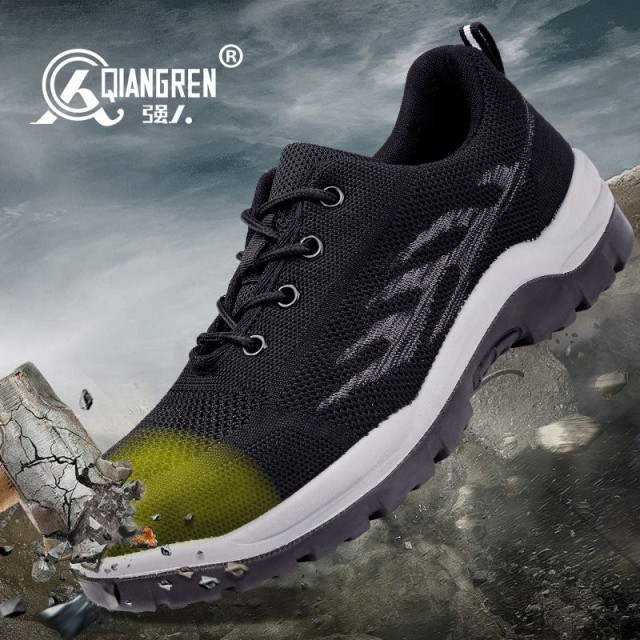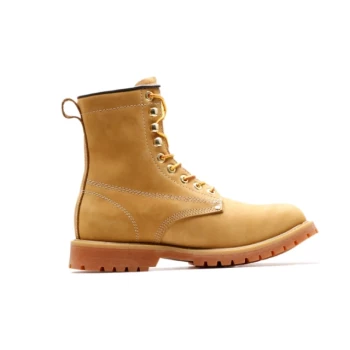Every year, workplace injuries cost industries millions in lost productivity and compensation claims. The right work boots don't just protect feet—they actively prevent career-ending accidents. This guide decodes how each component addresses specific occupational risks, helping safety managers and workers make informed choices.
Anatomy of a Supportive Work Boot
Insole: The Foundation for Arch Support and Fatigue Prevention
Research shows that improper arch support contributes to nearly 40% of lower back pain cases among industrial workers. Quality insoles:
- Absorb shock from repetitive impacts (e.g., warehouse concrete floors)
- Distribute weight evenly to reduce plantar fascia strain during 10+ hour shifts
- Wick moisture to prevent fungal growth in humid environments
For assembly line workers, memory foam insoles adapt to foot contours, while anti-fatigue gels benefit those standing on rebar grids at construction sites.
Midsole & Shank: Stabilizing Heavy Loads on Uneven Terrain
The midsole-shank system acts as your boot’s suspension:
| Component | Steel Shank | Composite Shank |
|---|---|---|
| Weight | Heavier (~20% more) | Lightweight |
| Conductivity | Transfers temperature extremes | Insulates against heat/cold |
| Best For | Oil rigs with puncture risks | Airports, manufacturing plants |
Composite materials like fiberglass excel in electrical hazard zones, while steel remains the gold standard for debris-heavy environments.
Puncture Plate: Debris Protection in High-Risk Environments
A 2021 OSHA report linked 12% of foot injuries to nails, glass shards, or metal scraps penetrating thin soles. Puncture plates:
- Use Kevlar® or thermoplastic layers to stop sharp objects
- Add minimal bulk compared to traditional steel inserts
- Are mandatory for demolition crews and recycling facilities
Outsole: Slip Resistance and Surface Adaptability
The right tread pattern can reduce slip-and-fall incidents by over 50%:
- Lug soles: Deep grooves for muddy construction sites
- Oil-resistant rubber: Critical for auto repair shops
- Vibram® compounds: Maintain flexibility in sub-zero temperatures
Matching Boot Components to Your Job Demands
Construction Sites: Prioritizing Impact Resistance
Masonry and steel erection demand boots with:
- ASTM F2413-18 rated toe caps to withstand 75+ lb dropped objects
- Metatarsal guards for overhead hazard protection
- Abrasion-resistant uppers from materials like full-grain leather
Manufacturing Floors: Balancing Flexibility and Durability
Assembly line workers need:
- Lightweight composites to reduce leg fatigue during repetitive motions
- Static-dissipative soles (SD ratings) to prevent sparks near electronics
- Seamless liners that prevent blistering during lateral movements
Oil & Gas Fields: Chemical-Resistant Materials
Hydrocarbon exposure degrades standard rubber in months. Optimal choices include:
- Nitrile outsoles that resist oil, acids, and alkalis
- Waterproof membranes like Gore-Tex® for offshore platforms
- Non-sparking metals in safety toes for flammable vapor zones
Upgrade Your Safety Standards with 3515’s Engineered Footwear
As a trusted manufacturer for industrial distributors and bulk buyers, 3515 crafts boots that merge OSHA compliance with ergonomic innovation. Our production capabilities span specialized designs for construction, manufacturing, and hazardous material handling—ensuring your workforce gets precise protection without compromising mobility. [Contact our team] to discuss custom solutions tailored to your operational risks.
Products You Might Be Looking For:
View durable steel toe work boots
Explore customizable safety footwear
Check out high-quality steel toe boots
Browse 3515 manufacturing safety boots
Find safe steel toe work shoes
Related Products
- Wholesale Leather Work Boots with Customizable Wedge Sole for Brands
- Wholesale Slip-On Safety Boots Manufacturer - Custom Puncture-Proof & Steel Toe
- Durable Steel Toe Safety Boots Wholesale & Custom Manufacturing
- Wholesale Durable Safety Boots | Custom Steel Toe & Puncture-Resistant Manufacturing
- Custom Wholesale Leather Safety Boots Direct Factory Manufacturing
Related Articles
- How Slip-Resistant Work Boots Prevent Industry-Specific Injuries and Compliance Risks
- How Non-Conductive Materials in Safety Boots Meet Electrical Hazard Standards
- How Work Boot Outsole Engineering Targets Workplace Hazards: A Science-Backed Guide
- How to Wear Sneakers Professionally: A Style Guide for Modern Workplaces
- How Weatherproof Work Boots Prevent Cold- and Wet-Weather Health Hazards in High-Risk Jobs




















